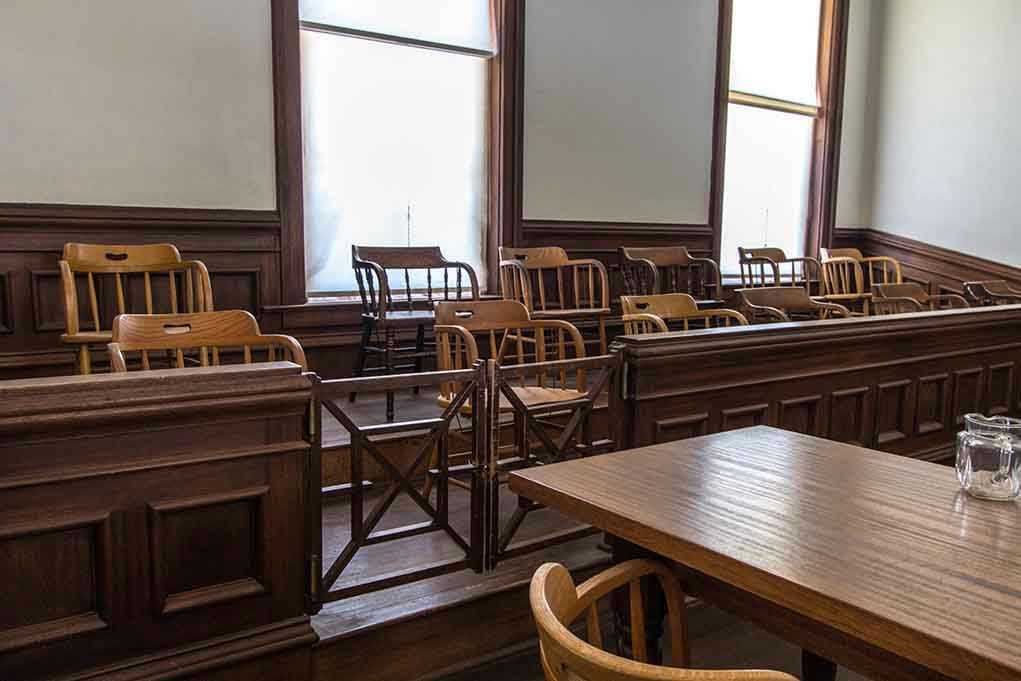
A Colorado dentist’s alleged plot to poison his wife is now center stage in a murder trial that exposes a twisted web of deceit, digital breadcrumbs, and a shocking abuse of professional trust.
At a Glance
- James Craig, an Aurora dentist, stands trial for allegedly fatally poisoning his wife, Angela, with cyanide and eye drop chemicals after months of suspicious illness.
- Prosecutors say Craig’s internet search history reveals chilling research into undetectable poisons and methods to disguise murder as natural death.
- The defense is challenging the admissibility of digital evidence, claims police bias, and disputes forensic findings in the case.
- Allegations have surfaced that Craig attempted to tamper with evidence and even orchestrate crimes from jail, intensifying scrutiny on the case.
Digital Fingerprints and a Marriage in Crisis: What Led to Angela Craig’s Death?
James Toliver Craig, a dentist and family man from Aurora, Colorado, is accused of turning his medical expertise into a weapon against his wife of 23 years, Angela Craig. The couple, who shared six children, appeared from the outside to be the picture of suburban stability. But beneath the surface, prosecutors say, Craig was plotting Angela’s demise, motivated by financial woes and a relationship with a fellow dentist. Over the course of March 2023, Angela suffered several baffling episodes of dizziness and headaches that sent her to the hospital repeatedly. Doctors were stumped, but investigators now allege her symptoms were the result of Craig’s deliberate poisoning attempts. Their suspicions solidified after Angela’s sudden deterioration and death, which led to a shocking discovery of Craig’s extensive online research into poisons, murder methods, and autopsy detection.
Craig’s digital history—unearthed from devices at his dental practice, Summerbrook Dental Group—showcases searches for “undetectable poisons,” “how to make a murder look like a heart attack,” and “is arsenic detectable in an autopsy?” Prosecutors allege Craig first tried to purchase arsenic, and when those efforts failed, he turned to potassium cyanide and tetrahydrozoline, an eye drop ingredient. These chilling findings, combined with allegations of an extramarital affair and mounting financial stress, paint a disturbing picture of motive and premeditation. The prosecution’s case hinges on this digital trail, asserting that Craig used his professional knowledge to exploit gaps in medical detection and cover his tracks, even attempting to plant evidence to frame Angela’s death as suicide.
Inside the Courtroom: Defense Pushback and a Battle over Evidence
Court proceedings began in earnest on July 15, 2025, with jury selection under intense media scrutiny, raising concerns about the impact of pretrial publicity. Craig has pleaded not guilty to all charges, including first-degree murder, solicitation to commit murder, and solicitation to commit perjury. His defense team, led by attorney Lisa Fine Moses, is challenging the heart of the prosecution’s case. They argue that police investigators exhibited bias, that much of the damning digital evidence was improperly obtained, and that forensic tests on the protein shake containers failed to reveal poison. The defense is also targeting the credibility of jailhouse informants who claim Craig solicited them to commit further crimes, including efforts to kill the lead investigator and fabricate evidence of Angela’s supposed suicidal intent. These allegations, if proven false, could undermine the state’s case and highlight the dangers of relying on incentivized testimony from jailhouse sources.
The prosecution, meanwhile, remains adamant that Craig’s “digital fingerprints” and alleged attempts to manipulate witnesses and evidence are overwhelming proof of guilt. Legal experts emphasize the importance of ensuring the admissibility and integrity of the digital and forensic evidence, noting that this case could set important precedents for how such evidence is handled in future high-profile trials. The judge has already denied several motions to suppress the electronic evidence and dismiss charges, but the defense continues to hammer away at procedural issues, hoping to cast enough doubt to sway the jury.
The Ripple Effects: Trust in Professionals, Family Trauma, and Public Fascination
The trial’s outcome will have lasting consequences, not just for Craig and the devastated family he leaves behind, but for the entire Aurora community and beyond. For the Craigs’ six children, the ordeal is a tragedy compounded by relentless public attention and the loss of both parents—one to death, the other to a prison cell, should he be convicted. The case has also shaken trust in medical and dental professionals, serving as a grim reminder that even those sworn to do no harm can exploit their expertise for unspeakable ends. Regulators may soon face pressure to tighten oversight and ethical standards in healthcare, while law enforcement and judicial systems grapple with the challenges of managing digital evidence and preventing pretrial publicity from tainting justice.
On a broader scale, this case has become a lightning rod for public debate about family violence, the fragility of trust, and the potential for abuse hidden behind respectable facades. In an era when Americans are already skeptical of institutions—from government to the medical establishment—such stories only deepen the cynicism and demand accountability. The legal wrangling over digital searches, informant testimony, and forensic reliability will be closely watched, both for what it reveals about this family’s tragedy and for the precedents it may set for the future. One thing is certain: the verdict in this trial will reverberate far beyond the courtroom, shaping conversations about crime, justice, and trust in the professionals we rely on every day.











